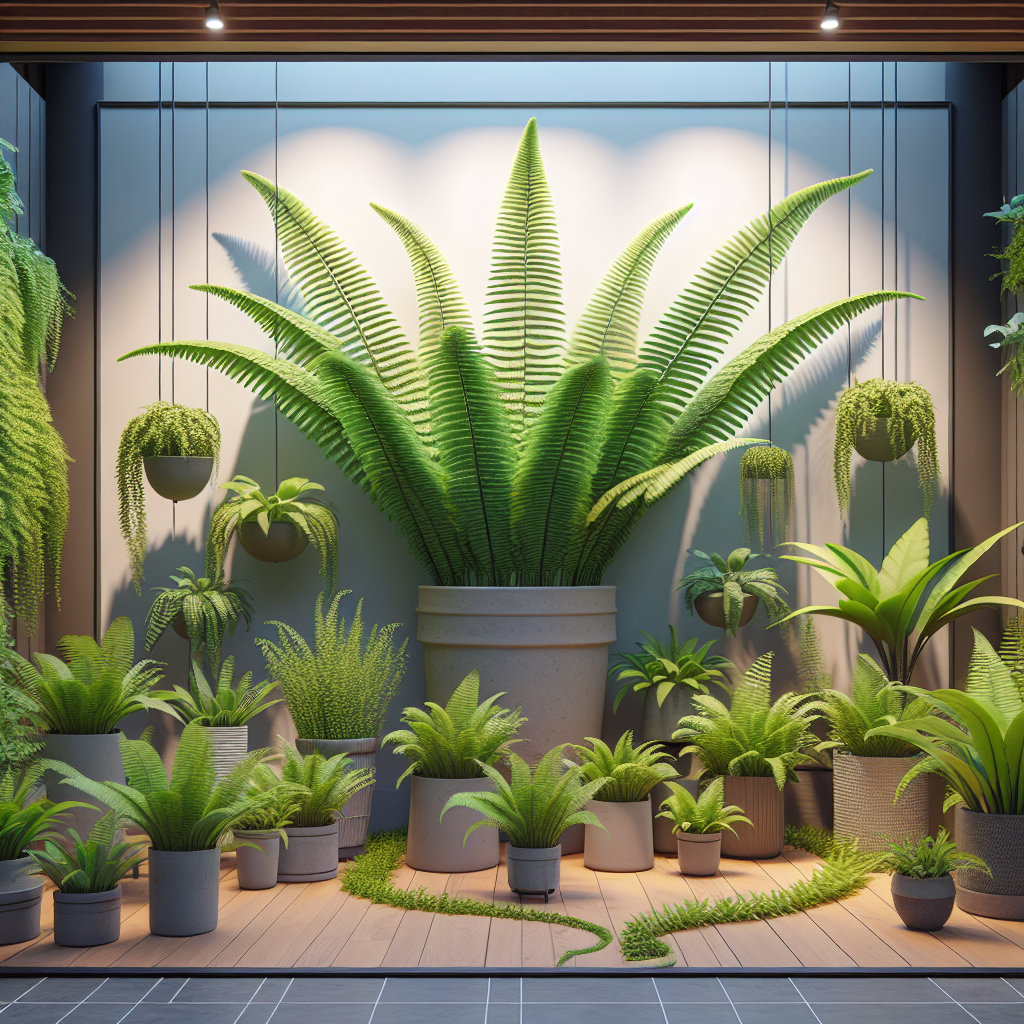Thriving Ferns in Containers: The Perfect Indoor Greenery
Ferns have long been admired for their delicate, feathery foliage and ability to add an elegant touch to any space. These plants have a rich history dating back millions of years, and they continue to be popular among indoor gardeners. With their wide variety of species and relatively low maintenance requirements, ferns are the perfect choice for those looking to bring a touch of nature into their homes.
One of the many reasons why ferns make excellent indoor plants is their adaptability. Unlike many other houseplants, ferns are well-suited to living in containers, making them ideal for apartments or homes with limited outdoor space. Whether you’re a seasoned gardener or just starting out, here are some tips on how to thrive with ferns in containers.
Choosing the Right Container
The first step in successfully growing ferns in containers is selecting the right pot. Fern roots tend to grow horizontally rather than vertically, which means they require a relatively shallow container. Look for pots that are wide and shallow rather than deep. This will provide ample room for the roots to spread out and allow for proper drainage.
Additionally, consider using containers made from materials such as clay or terracotta. These options offer better airflow and prevent soil from becoming overly saturated, which can lead to root rot. However, if you prefer plastic or ceramic pots, make sure they have drainage holes at the bottom.
Selecting the Right Soil
Ferns thrive in well-draining soil that is rich in organic matter. A high-quality potting mix specifically formulated for indoor plants is ideal. Avoid using garden soil as it may contain pests or diseases that could harm your ferns.
To further enhance drainage and moisture retention, consider adding perlite or vermiculite to your potting mix. These additives help create a light and airy medium that allows water to drain freely while still holding enough moisture for the fern’s roots.
Light Requirements
While ferns naturally grow in shaded areas of forests, they still require some indirect light to thrive indoors. Place your ferns in a location where they receive bright, filtered light but are protected from direct sunlight. East or north-facing windows are perfect for providing the right balance of light and shade.
It’s important to note that different species of ferns have varying light requirements. Some prefer more shade and indirect light, while others can tolerate more brightness. Research the specific needs of your chosen fern species to ensure optimal growth.
Watering and Humidity
Ferns love moisture, so it’s crucial to keep their soil consistently moist but not waterlogged. Water your container-grown fern when the top inch of soil feels dry to the touch. Avoid overwatering as it can lead to root rot and other fungal diseases.
In addition to watering, maintaining a humid environment is key to thriving ferns. Considering that indoor conditions are typically dryer than what ferns prefer, you can increase humidity levels by placing a tray filled with water near your plant or using a humidifier. Alternatively, misting the foliage once or twice a week can also help mimic their natural habitat.
Temperature and Air Circulation
Ferns generally prefer cooler temperatures ranging from 60°F-75°F (15°C-24°C). Avoid placing them near heating vents or air conditioning units that produce hot or cold drafts.
Good air circulation is also important for preventing diseases and ensuring healthy growth. Positioning your container-grown fern in an area with gentle air movement will help avoid stagnant air pockets that could promote fungal growth.
Feeding Your Ferns
To maintain healthy growth, it’s essential to feed your ferns regularly with a balanced houseplant fertilizer. During the growing season (spring and summer), apply a slow-release fertilizer every couple of months or use a liquid fertilizer diluted at half-strength once a month. In the dormant season (fall and winter), reduce feeding frequency to once every two to three months.
Pruning and Maintenance
Regular pruning is key to keeping your container-grown fern looking lush and healthy. Remove any yellowed or damaged fronds to encourage new growth. Trimming back excessive growth also helps maintain the overall shape of the plant.
Additionally, keep an eye out for pests such as mealybugs or aphids, which can occasionally infest ferns. If you notice any signs of infestation, promptly treat the affected areas with a mild insecticidal soap or neem oil solution.
Conclusion
Thriving ferns in containers can bring a refreshing touch of greenery and elegance to indoor spaces. By choosing the right container, providing proper light, humidity, and temperature conditions, as well as regular pruning and maintenance, you can successfully grow these ancient plants in your home.
Whether you’re an experienced gardener or just starting out, ferns are an excellent choice for adding natural beauty to your indoor environment. So go ahead and embrace these resilient yet delicate plants that have stood the test of time – your home will thank you!













